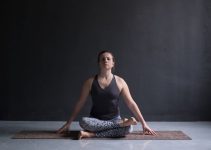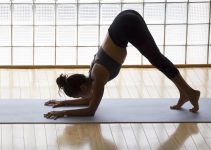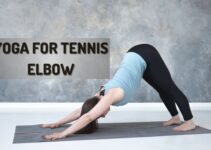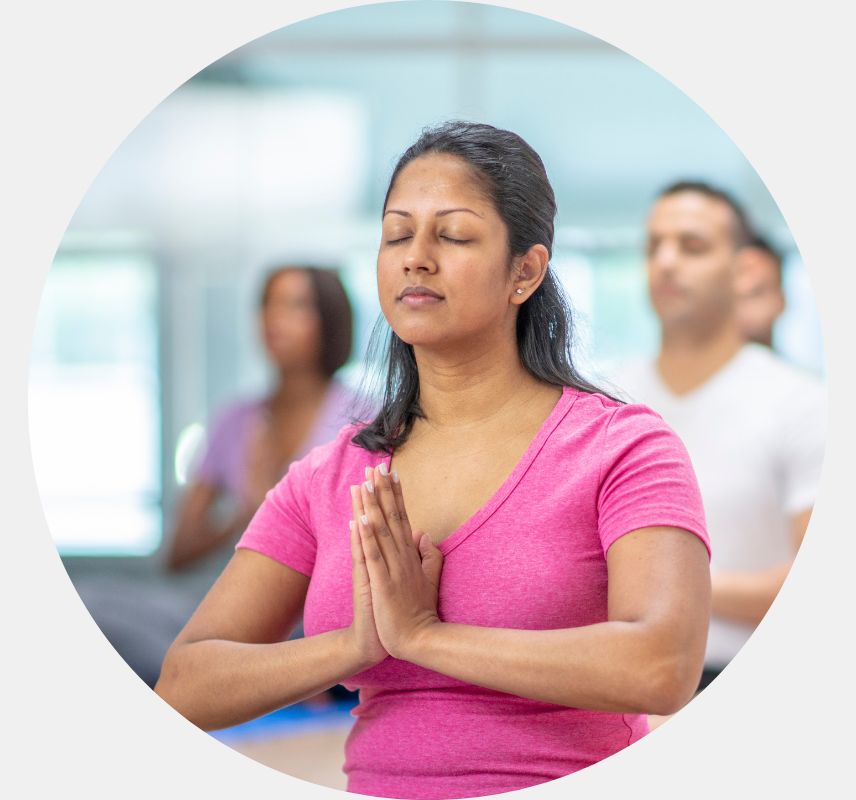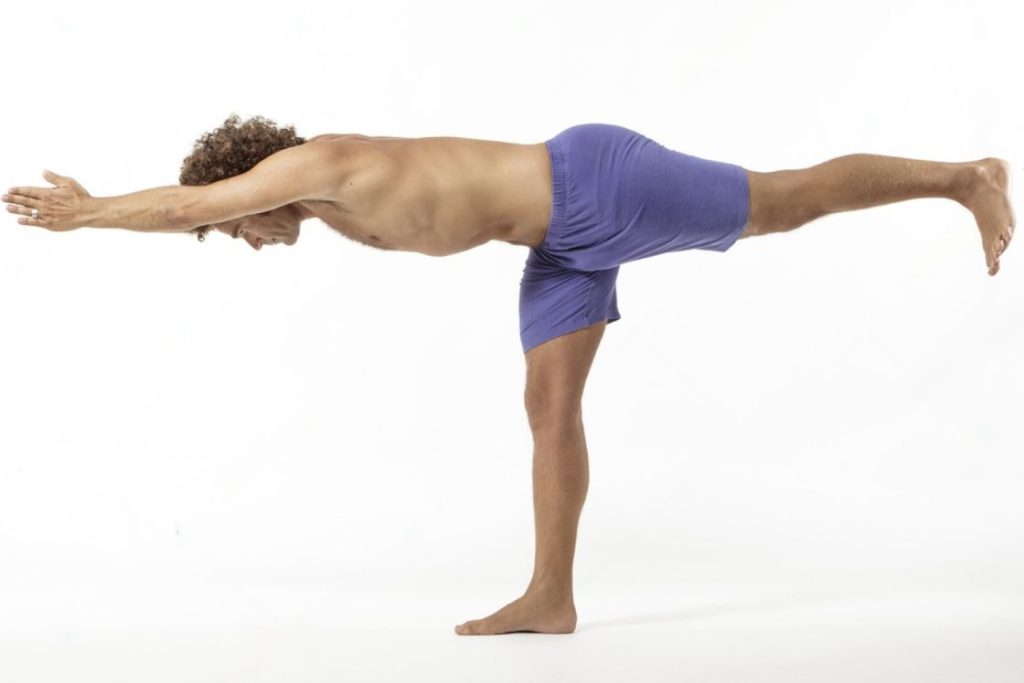
When the topic of muscle building comes up, everyone imagines muscular men or women striding through the aisles of gyms. You will hardly find anyone advocating yoga as an alternative workout for muscle building.
But what if we said that yoga can help you get the body muscles you want?
Yoga has never been touted as an exercise for building muscle mass, but if you modify the postures to your liking and introduce some intense variations, you can effectively achieve a muscular body. Building muscle is believed to improve bone density, metabolism, sleep quality and cognitive health.
Different yoga postures can target specific muscles, train your core, and help you gain functional strength when done correctly.
Unlike traditional strength training, yoga primarily uses your own body weight to improve muscular endurance while reducing stress, increasing flexibility and synchronizing your breath with movement.
Whatever pose you perform, you might have noticed that getting into the pose is much easier than holding the pose. This is because holding the pose needs muscle tension, which is ideally the backbone of the muscle-building workout.
Keeping in mind this aspect of yoga, we have listed some yoga poses which can help you build muscles. The forthcoming sections will also let you whether yoga can build muscle and how yoga can help in this endeavor
Does Yoga Build Muscle?
The main goal of yoga is clearly not to build muscle. But that doesn’t mean that yoga can’t help build muscle.
Yoga can help reduce the risk of injury, improve physical endurance, and shape muscles to achieve a toned appearance. This is possible because yoga doesn’t isolate any particular muscle, but rather trains large muscle groups together.
Muscle tension, the feeling of exercising and defying gravity, is the fundamental factor that influences muscle growth. The stretches incorporated into yoga practice help keep muscles flexible and can even promote muscle growth.
To maintain good form in any yoga pose, you need to use a specific muscle or set of muscles. As you move from one pose to the next, performing specific sequences, your strength will increase.
According to a study published in 2015, muscle strength, endurance and flexibility increased significantly when 20 female field hockey players practiced yoga for eight weeks.
This proves that certain yoga poses when applied correctly and with the right intention can create enough metabolic stress and build muscles.
In the same year, another study revealed that 12 weeks of hatha yoga significantly contributed to increasing muscle strength, cardiorespiratory endurance, and flexibility.
Yoga provides a logical and practical method for developing strength in a way that helps you to keep and regain balance. You are required to move and exert yourself in a yoga pose using your normal movement patterns. Instead of relying just on isolated exercises found in the gym, yoga focus on developing strength in useful ways.
How Does yoga Promote Muscle Growth?
Progressive overload
Progressive overload refers to increasing the weight or the number of reps to gradually get stronger. This is done to avoid the body getting stagnant and not showing the expected results as was seen in the beginning.
You must have seen people, who go to the gym for muscle building, start with the smallest weight and progressively increase the weight of their barbells or dumbbells quite frequently. The same technique can be applied to yoga but without any weights.
When practicing yoga asanas, you often start with a few basic poses with a small hold time. As your body becomes used to the pose and gains strength, you increase the difficulty level and the hold time as well. As you introduce variations in the pose, your muscles also increase the tension which results in more stretching.
A 2014 study also concluded on the above concept that various positions can result in targeted muscle stimulation patterns.
Pose repetition patterns and longer hold lengths cause progressive exhaustion. With each sequence and yoga lesson, push yourself to advance and keep up your stamina.
Mechanical Damage
Muscle growth indisputably depends on mechanical injury to muscles. Microscopic tears form in muscles when you increase tension, stretching and contraction. The muscles grow bigger when they recover thanks to this natural process.
When you lift weights, the same process takes place.
If you hold your positions longer, you can cause mechanical damage during yoga practice. This causes the muscle fibers to stretch and the cells to divide as they repair themselves, resulting in increased muscle growth.
Mechanical damage can also occur with eccentric overload. Eccentric overload occurs when muscles lengthen when standing up from a push-up, lunge, squat, or change of posture.
Metabolic stress
You typically move more slowly as soon as you start to experience physical exhaustion. Holding the tension, particularly at that moment, gives the nerve cells more time to sense the stress and more stimuli to promote muscular growth.
Applying a lot of resistance will cause metabolic stress, which puts your muscles under tension and eventually promotes muscle growth. Your practice’s depth and variety in yoga poses will determine how much metabolic stress you induce.
Thus, a fast-paced Bikram or power yoga class will produce a lot of metabolic stress but a slow-paced Hatha or yin yoga will be more restorative and unable to result in muscle growth.
Which Yoga form is Effective in Building Muscles?
Ashtanga, hot, vinyasa and power yoga are among the best options if you want to build muscle. These forms of yoga are more fast-paced and include some great muscle stretching and strengthening poses.
Power yoga is among the most physically demanding types of yoga. It is based on the Ashtanga yoga pose sequence, which strengthens your upper body while improving your flexibility and balance.
Vinyasa yoga helps you get fitter and strengthen your muscles at the same time, as the difficult poses are performed quickly one after the other.
Muscle development can be enhanced by a regular hatha yoga practice, but to achieve the desired muscle strength, longer holding times for more difficult poses are required.
Iyengar, Yin, and Restorative yoga can help improve small tissue flexibility and strength because of their long holding times. These movements expose the muscle fibers to increasing tension, which forces them to become stronger.
7 Best Yoga Poses for Muscle Building
Tree Pose (Vrksasana)
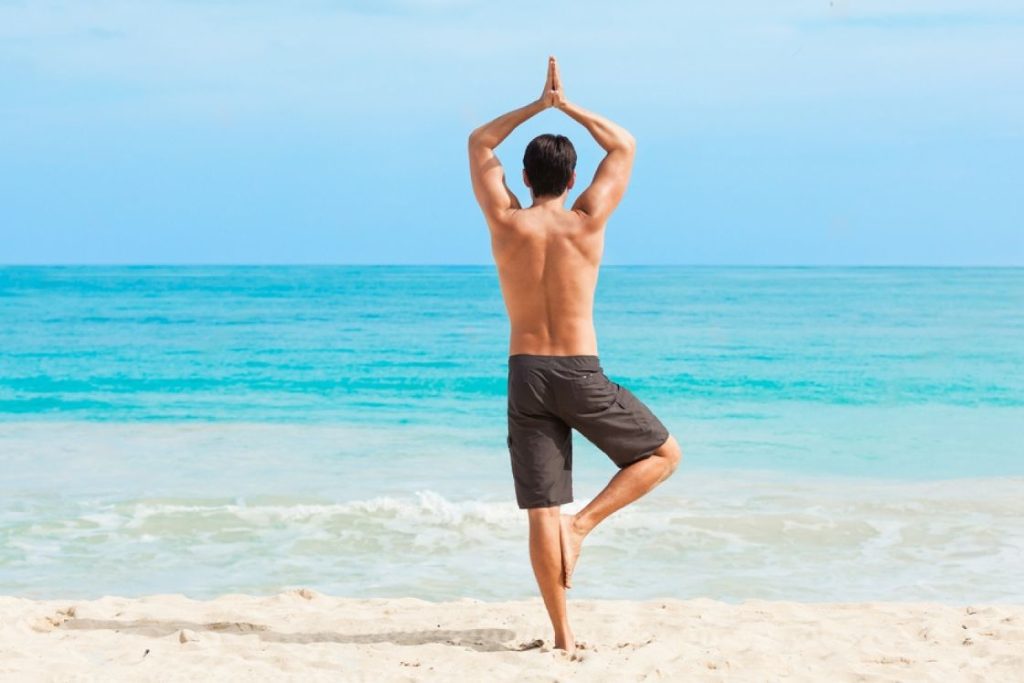
From the thighs to the calves and feet, this exercise is beneficial for numerous lower body muscles. The grounded leg gets a good groin stretch as each of the tiny stabilizer muscles around the ankle, knee, and hip are engaged.
This standing balancing pose works on the muscles on the side of the leg which often get neglected.
Steps to perform
- Stand in Tadasana (Mountain Pose) with your feet firmly grounded on the mat and your bodyweight spread equally on all four corners of the feet.
- Putting some weight on your left foot, bend your right foot, and slowly lift the right leg.
- Turn your right foot inwards and place the sole on the inside of the right thigh. To maintain the balance, give equal pressure on both the thigh and sole by pressing them towards each other.
- Keep your gaze on a focal point in front of you to help you with the balance.
- You can place your hands in the Anjali Mudra in front of your chest or stretch them above your head and join the palms.
- Hold this pose for at least 3 breathes and then repeat with the other leg.
Warrior I Pose (Virabhadrasana I)
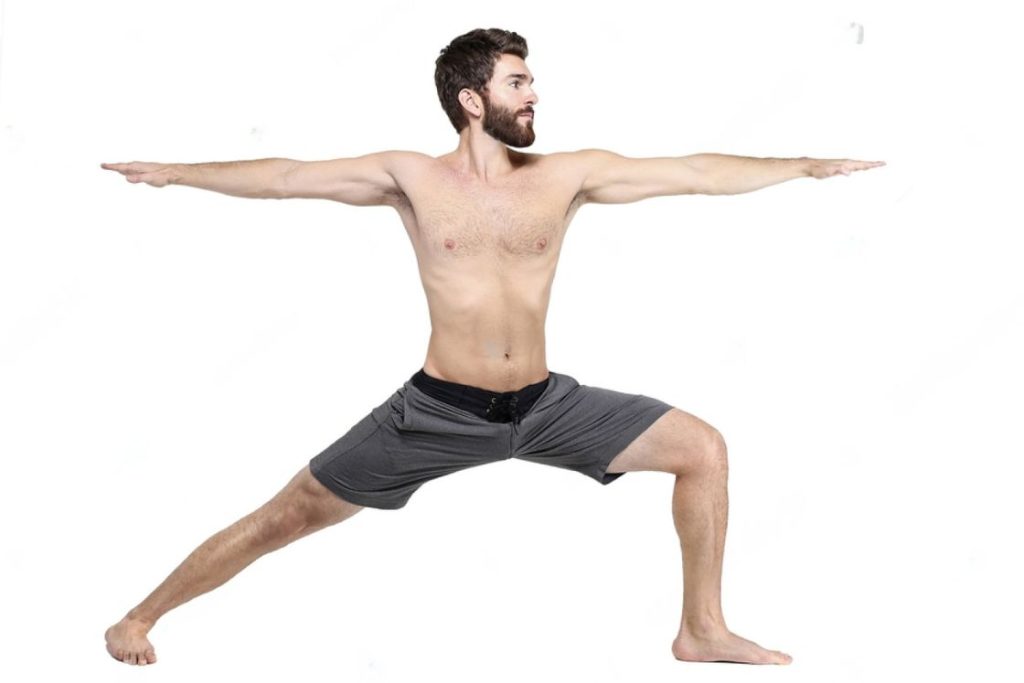
The focus of Warrior I is on engaging the lower body, opening the chest, and engaging the thighs, calves, and hamstrings. Your glutes and quads will become more activated the more intensely you hold warrior positions.
Steps to perform
- Stand in Tadasana (Mountain Pose), facing the shorter end of the mat.
- Step your left foot back, placing it firmly on the floor and turning it to a 45-degree angle. Keep your leg straight without locking your knee.
- Bend the right knee to make a 90-degree angle. Your thighs should become parallel to the floor and your knee should be stacked over the ankle.
- Make sure your right heel is in line with the left foot arch.
- Stretch your arms upwards with palms facing each other. Open your chest, lengthen the spine and draw in your abdomen while bringing your arms up.
- Your hips should also be facing forward and should not be tilting sideways.
- Keep your head facing the front or tilt it upwards to gaze at the fingertips.
- Press down on your left foot to keep your spine straight and keep your shoulders away from your ears.
- Hold this pose for 3-5 breaths and repeat the process with the other leg.
Warrior III Pose (Virabhadrasana III)

The balancing nature of Warrior III gives a deeper and intense focus on the core. It engages the full backside of the body and places much more tension on the standing leg. back, hamstrings, calves, and shoulders also get strengthened simultaneously.
Steps to perform
- Start with the Tadasana (Mountain Pose).
- Place your right foot firmly on the ground, engage your abdominal muscles, and apply slight pressure on the outer right hip.
- Lift your left leg to bring it parallel to the ground.
- Do not lock your right knee and make sure that your hip, knee, and ankle are in one line.
- While lifting the leg, your upper body, along with the arms will move forward, bringing your entire upper body and left leg in a straight line. Your body will form a perfect ‘T’ stance.
- You can keep your arms on the side, stretching them towards the toes to lengthen your spine. Or you can bring your arms in front of you, in line with the rest of the body. Join your palms together or with arms, shoulder distance apart, and fingers spread.
- You can either look straight or look down, depending on your neck situation.
- Stay in this pose for 3-5 breaths and release gently.
- Practice this pose with the other leg after relaxing for a few seconds.
Chair Pose (Utkatasana)
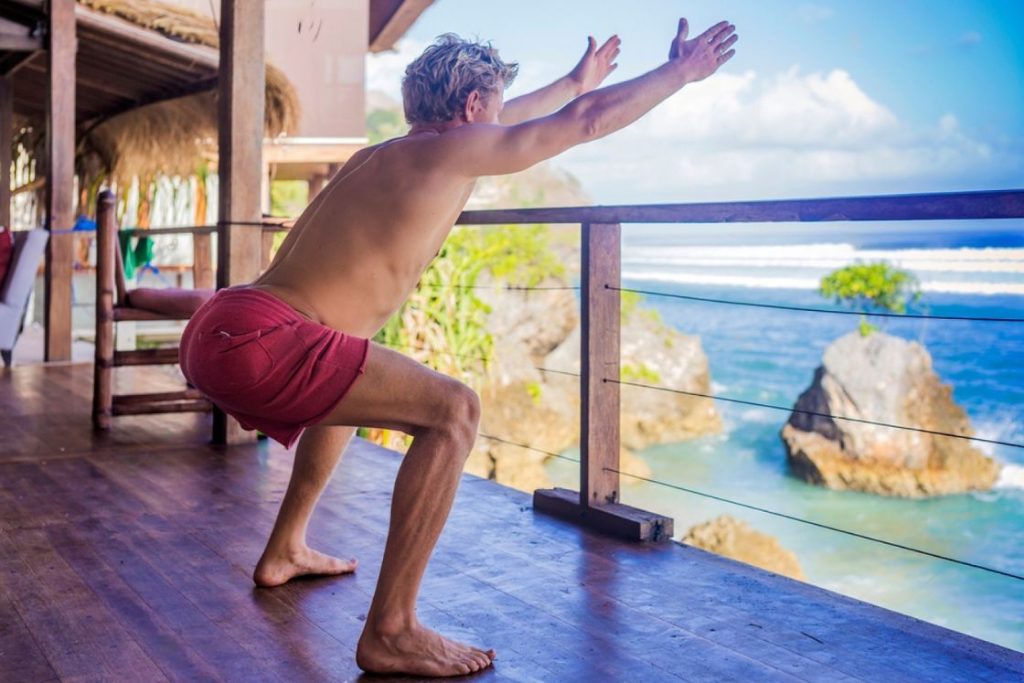
The chair pose is known for generating inner heat and toning the entire body. While working your core to maintain a straight back, it tones your thighs, quads, and ankles. Your quadriceps and glutes will start to burn as your legs hold your weight in this half-squat position with a shallow posture.
Steps to perform
- Stand in Tadasana (Mountain Pose). Spread your arms in front of you with palms down or stretch them overhead with palms facing each other.
- Place your feet firmly on the ground, bend your knees, and bring your pelvis down. Imagine if you are about to sit on a chair.
- Try to keep your spine straight as your trunk leans forward as you push down.
- Keep your hips in line by engaging your core and tucking in your tailbone.
- Keep your head straight to focus on a point in front of you.
- To increase the stretch in your legs, push down your hips but make sure that your knees do not go beyond the toes.
- Stay in this pose for at least 3 minutes and gradually increase the time.
Plank Pose or Four Limbed Staff Pose (Chaturanga Dandasana)
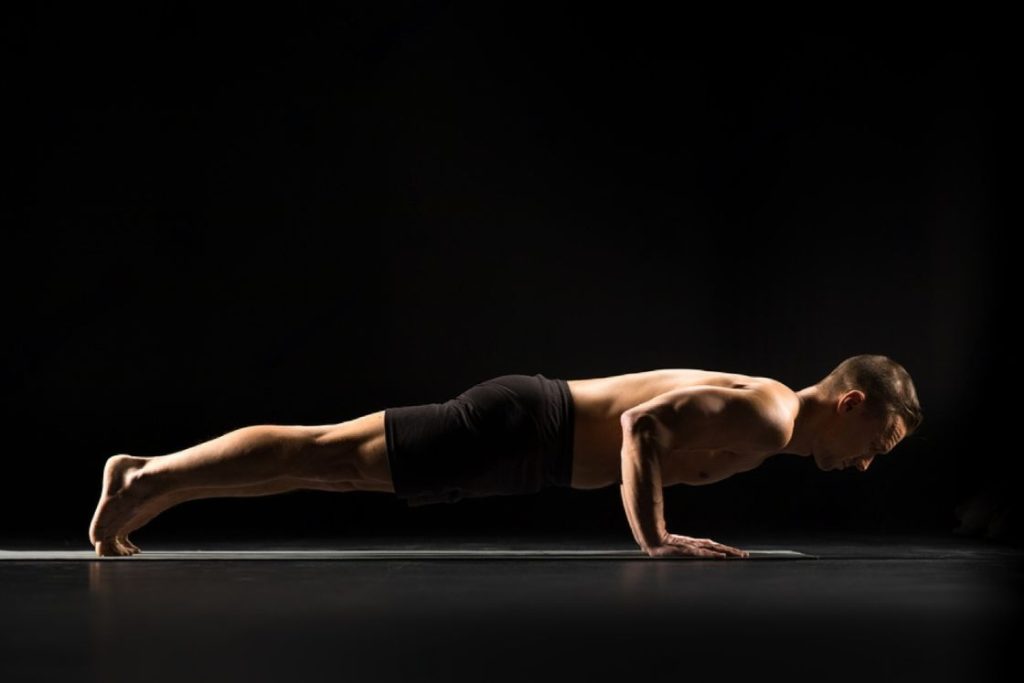
Plank is a core-strengthening exercise. The four-limbed staff pose works your core and develops upper body strength. It can be very helpful in building the triceps. It is considered to strengthen the arms, wrists, and shoulders.
It also highlights your areas of weakness.
For desired outcomes, hold it for as long as you can.
Steps to perform
- Lie stomach-down on the yoga mat with your arms bent at the elbows and hands beside the shoulders.
- Place your feet verticle so that the balls of the feet are touching the mat. Spread your finger to get a firm grounding and evenly distribute the pressure.
- Engaging your core and pressing down on your hands, lift your entire body to make a straight line.
- Your arms should be parallel to each other with your shoulder stacked over the wrists. Do not lock your shoulders and elbows to avoid any strain or injury.
- Tuck your tailbone to keep your back, hips, and legs in a straight line.
- Imagine stretching the crown of your head forward and heels towards the back to maintain the required position.
- Pull your navel towards the spine to keep your lower back from collapsing.
- Hold it for at least 10-15 seconds and increase the time gradually.
Downward Facing Dog (Adho Mukha Svanasana)
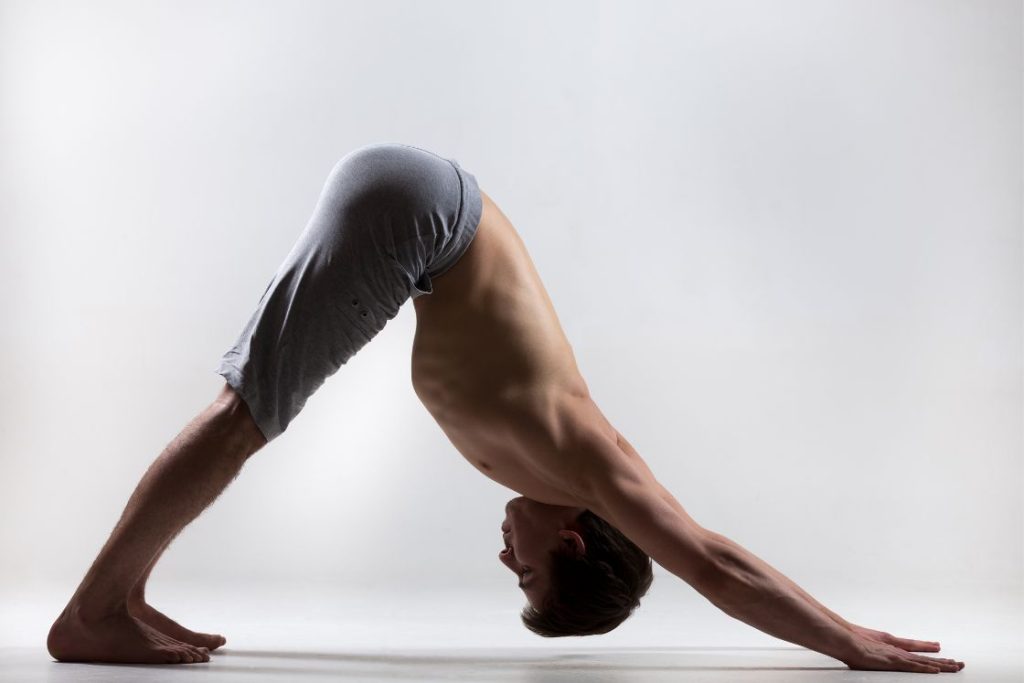
All of the key muscles in your legs and lower body, including your glutes, hamstrings, quadriceps, calves, knees, and feet, are stretched and strengthened in the downward-facing dog pose. A strong workout is also given to your entire back, shoulders, arms, and wrists.
Steps to perform
- Come to a tabletop position with your arms parallel to each other and shoulder-width apart. Keep your legs hip-width apart as well. Spread your finger to distribute the weight evenly on your hands.
- Press your hands firmly onto the ground and lift your knees to straighten your legs. Avoid locking your shoulders, elbows, and knees, but keep them straight.
- Stretch your tailbone towards the ceiling to lift from the hips and keep your back straight.
- To stretch your hamstrings, press your heels on the ground while keeping a micro bend in the knees.
- Make sure that your weight is evenly distributed in your arms and legs.
- Let your head and neck hang freely and keep a fixed point as your focal point for a steady gaze.
- Hold this pose for 5 breaths and release gently.
Triangle Pose (Trikonasana)
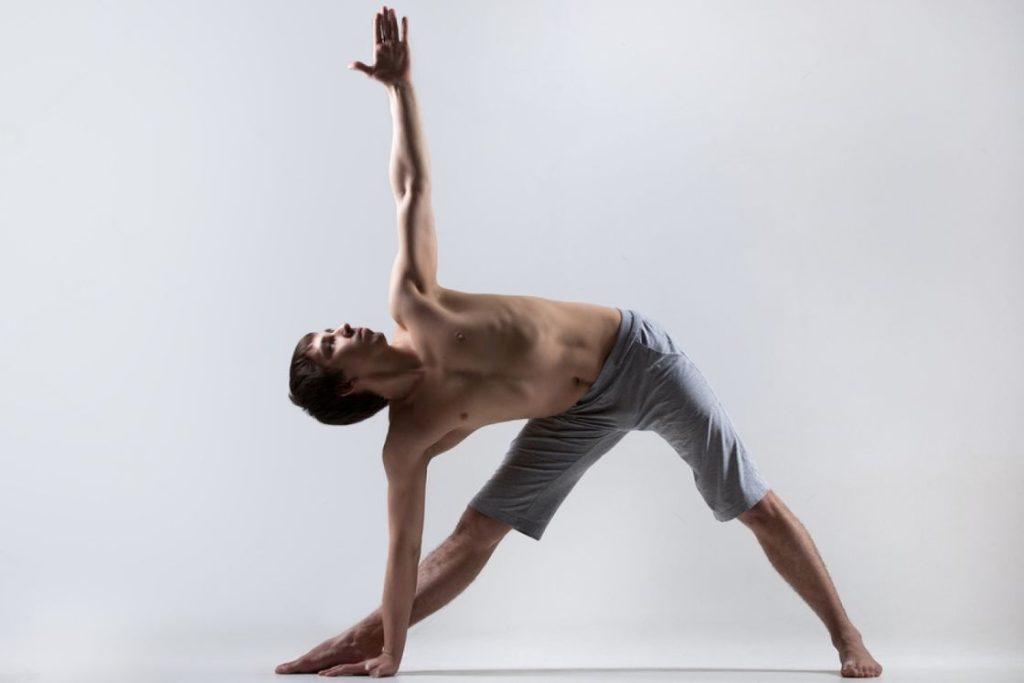
By practicing the triangle pose, you will be effectively stretching and lengthening your thighs, hips, and back muscles. You will feel a nice stretch in the hamstrings and calf muscles as well. It tests your balance meanwhile obliques are strengthened and spinal muscles are stimulated. The knee, hip, and ankle joints can benefit from increased endurance as well.
Steps to perform
- Stand in Tadasana (Mountain Pose), facing the longer side of the mat, with your feet 3-4 feet apart.
- Turn your left foot diagonally outwards and point your right foot towards the shorter end of the mat. The heels of your feet should be aligned.
- Spread your arms to the side with your palms facing down. They should be parallel to the mat with your shoulders should be away from your ears.
- Start bending down towards your right foot from your hips. Bring your right arm down and your left arm move upwards.
- Bend till your fingers touch your ankle or the top of the right foot. You have an option to bring your arm completely on the mat or keep it in front of your shin. You can also use a yoga block on its highest setting to rest your hand.
- Keep your arms in a straight line with your left-hand fingers pointed towards the ceiling. Your shoulders should be in line with each other.
- Turn your head upwards to gaze at your left fingers.
- Hold this pose for 5 breaths and repeat the with the other leg.
Tips for Muscle Building with Yoga
- Consistent practice of yoga is necessary to develop muscle while strengthening and improving your body’s flexibility. Yoga typically takes 4 to 8 weeks to build muscle.
- Aspire for three one-hour sessions per week but make sure to give proper rest to your body as well.
- Consider tailoring each yoga lesson to target certain muscle groups rather than exercising your entire body seven days a week.
- You should hold your yoga pose for as long as you can to gain the required muscle tension. Start with holding the pose for at least 30 seconds to 1 minute and gradually increase the time.
Conclusion
While yoga is often associated with flexibility and relaxation, incorporating specific yoga poses into your fitness routine can greatly improve your muscle building. The poses above address multiple muscle groups and help you develop strength, stability and balance. Remember to practice proper form, listen to your body, and gradually increase the intensity and duration of the poses as your strength increases. By using the power of yoga alongside your regular exercise routine, you can achieve a holistic approach to muscle building and overall physical well-being.
